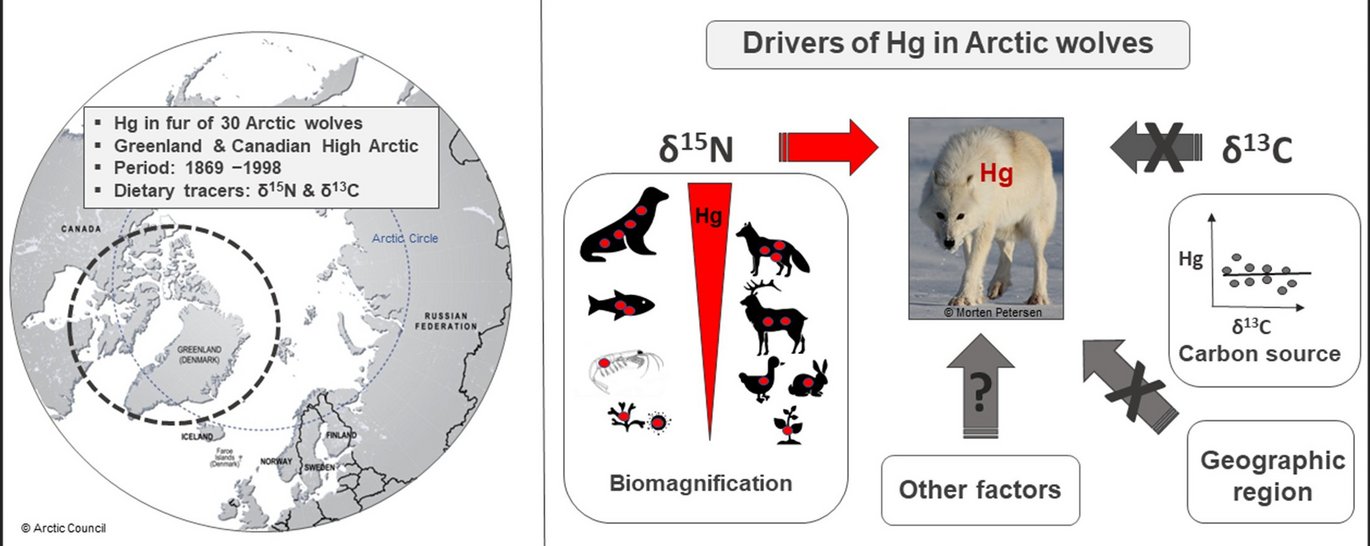An assessment of mercury and its dietary drivers in fur of Arctic wolves from Greenland and High Arctic Canada.
New publication by Gabriele Treu, Mikkel-Holger S. Sinding, Gábor Á. Czirják et al.

Abstract:
Mercury has become a ubiquitous hazardous element even ending up in pristine areas such as the Arctic, where it biomagnifies and leaves especially top predators vulnerable to potential health effects. Here we investigate total mercury (THg) concentrations and dietary proxies for trophic position and habitat foraging (δ15N and δ13C, respectively) in fur of 30 Arctic wolves collected during 1869–1998 in the Canadian High Arctic and Greenland. Fur THg concentrations (mean ± SD) of 1.46 ± 1.39 μg g −1 dry weight are within the range of earlier reported values for other Arctic terrestrial species. Based on putative thresholds for Hg-mediated toxic health effects, the studied Arctic wolves have most likely not been at compromised health. Dietary proxies show high dietary plasticity among Arctic wolves deriving nutrition from both marine and terrestrial food sources at various trophic positions. Variability in THg concentrations seem to be related to the wolves' trophic position rather than to different carbon sources or regional differences (East Greenland, the Foxe Basin and Baffin Bay area, respectively). Although the present study remains limited due to the scarce, yet unique historic study material and small sample size, it provides novel information
